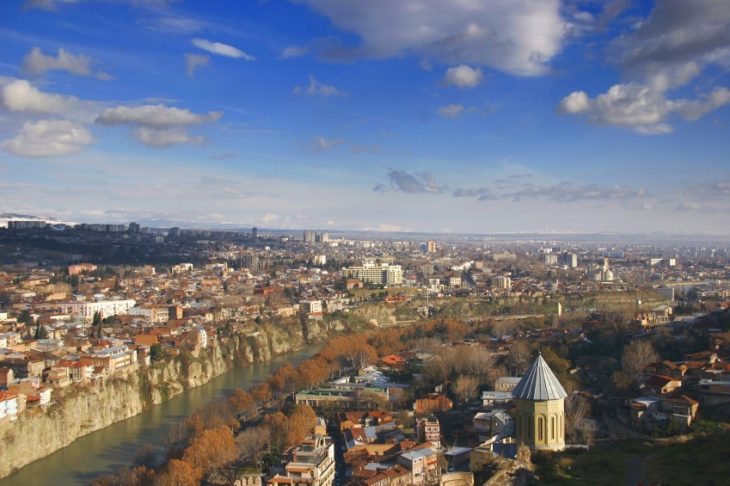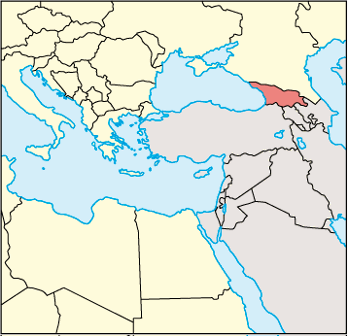What is the Capital of Georgia? Tbilisi

Capital City of Georgia: Tbilisi
City Overview
Tbilisi, the capital and largest city of Georgia, is located in the eastern part of the country, nestled along the banks of the Kura River. It serves as the political, cultural, and economic heart of Georgia and is one of the oldest cities in the region, with a rich and complex history that spans over 1,500 years. Tbilisi’s strategic position along trade routes between Europe and Asia has made it a melting pot of cultures, influencing everything from architecture to cuisine.
The city’s history dates back to the 5th century when it was founded by King Vakhtang I Gorgasali. Over the centuries, Tbilisi has seen various rulers, from the Arabs and Persians to the Russians, all of whom left their marks on the city. Tbilisi became the capital of the Kingdom of Georgia in the early Middle Ages, and it remained the country’s capital through many political changes. After Georgia gained independence from the Soviet Union in 1991, Tbilisi reaffirmed its role as the capital of the newly independent nation.
Modern-day Tbilisi is a dynamic metropolis with a population of over 1.1 million people. The city is renowned for its stunning mix of old and new, where ancient churches and fortresses sit beside contemporary glass-and-steel buildings. It is a city of contrasts, where cobblestone streets lead to modern squares, and rustic traditional homes stand next to swanky cafes and shops. Tbilisi has become a center of art, culture, and tourism, with its unique blend of Eastern European and Middle Eastern influences.
Key Facts about Tbilisi:
- Area: 726 square kilometers (280 square miles)
- Population: Approximately 1.1 million (2023 estimate)
- Time Zone: Georgian Standard Time (GET) (UTC +4)
- Highest Mountain: Mount Kazbek, located about 120 km north of Tbilisi, with an elevation of 5,047 meters (16,558 feet) above sea level.
- Longest River: The Kura River (also known as the Mtkvari River) flows through the heart of Tbilisi and has a total length of 1,515 kilometers (941 miles), making it the longest river in Georgia.
Tbilisi’s location in a valley surrounded by hills and mountains gives it a unique topography, with narrow winding streets and dramatic views, especially from locations such as the Narikala Fortress, which overlooks the city. The climate is continental, characterized by hot summers and cold winters, with plenty of sunshine year-round. Tbilisi is also a major transportation hub, connected by rail, road, and air, making it the gateway for visitors coming into Georgia from abroad.
Major Landmarks in Tbilisi
- Narikala Fortress
Perched on a hilltop above the city, Narikala Fortress dates back to the 4th century and offers some of the most breathtaking views of Tbilisi. The fortress was originally built by the Persians but has been expanded and modified over the centuries. Today, it stands as a symbol of Tbilisi’s resilience and offers visitors a glimpse into the city’s long and diverse history. - Holy Trinity Cathedral of Tbilisi (Sameba Cathedral)
The Sameba Cathedral is one of the largest religious buildings in the Caucasus and an architectural masterpiece of modern Georgian religious architecture. Completed in 2004, it is an important symbol of Georgia’s Orthodox Christian identity. The cathedral stands out for its size and beautiful design, with its golden dome visible from many parts of the city. - Freedom Square
Freedom Square is one of Tbilisi’s most famous public squares, located in the heart of the city. The square has witnessed many important historical events, including the Georgia Independence Movement in the early 1990s. At the center of the square stands the St. George Monument, a statue of St. George, the patron saint of Georgia, defeating a dragon. - Sulfur Baths (Abanotubani District)
Tbilisi is known for its sulfuric thermal baths, located in the Abanotubani district. These natural baths, built in the 17th century, are famous for their therapeutic properties and unique architecture. Visitors can enjoy a traditional bath experience in the ornate domed buildings that are heated by natural sulfur springs beneath the city. - Tbilisi Opera House
The Tbilisi Opera House, an elegant building located near Rustaveli Avenue, is one of the oldest and most prestigious theaters in Georgia. It hosts regular performances of opera, ballet, and classical music, making it a hub for Georgia’s thriving cultural scene. - Metekhi Church
Located on the banks of the Kura River, the Metekhi Church is one of the oldest and most significant churches in Tbilisi. The church dates back to the 12th century and has been rebuilt multiple times throughout its history. The view of Tbilisi from the church is spectacular, with the river and the city’s skyline forming a beautiful backdrop. - Rustaveli Avenue
Rustaveli Avenue is the main thoroughfare of Tbilisi, lined with grand buildings, theaters, museums, and cafes. It is named after the famous medieval Georgian poet Shota Rustaveli and is a cultural and social center of the city, where many of Tbilisi’s most important institutions are located.
Climate Overview
Tbilisi experiences a humid subtropical climate with continental influences. Summers can be quite hot, with temperatures frequently reaching over 30°C (86°F), while winters can be cold, especially in the mountainous areas surrounding the city. Spring and fall are mild, with pleasant temperatures and moderate rainfall.
| Month | Average Temperature (°C) | Average Precipitation (mm) | Avg Sunny Days |
|---|---|---|---|
| January | 3 | 40 | 5 |
| February | 5 | 36 | 6 |
| March | 8 | 41 | 7 |
| April | 12 | 45 | 9 |
| May | 17 | 55 | 10 |
| June | 22 | 60 | 11 |
| July | 26 | 58 | 12 |
| August | 25 | 55 | 11 |
| September | 19 | 46 | 9 |
| October | 12 | 45 | 7 |
| November | 7 | 41 | 5 |
| December | 4 | 42 | 4 |
Other Cities That Served as Capital in Georgia’s History
1. Mtskheta (Before 5th Century – Early 5th Century)
Mtskheta, located just a short distance from Tbilisi, was the ancient capital of the Kingdom of Iberia (the ancient name for Georgia). The city is rich in history and culture, home to several UNESCO World Heritage Sites, including the Svetitskhoveli Cathedral, one of the most important religious sites in Georgia. Mtskheta was the capital until the early 5th century when King Vakhtang I moved the capital to Tbilisi.
2. Kutaisi (5th Century to 10th Century)
Kutaisi served as the capital of Georgia during the early medieval period, particularly under the rule of the Kingdom of Abkhazia and later the Kingdom of Georgia. The city is known for its historic buildings and is home to the UNESCO-listed Bagrati Cathedral and Gelati Monastery. Although Tbilisi became the main capital in the 11th century, Kutaisi remains an important cultural and administrative center in Georgia.
Country Facts
Georgia, located at the crossroads of Europe and Asia, is a country rich in history, culture, and natural beauty. Known for its rugged landscapes, ancient cities, and unique traditions, Georgia has long been a vital part of the Caucasus region. It boasts a mix of ancient traditions, modern culture, and a thriving wine industry.
- Population: Approximately 3.7 million (2023 estimate)
- Area: 69,700 square kilometers (26,911 square miles)
- Largest City: Tbilisi
- Currency: Georgian lari (GEL)
- Official Language: Georgian
- ISO Country Code: GE
- Timezone: Georgian Standard Time (GET) (UTC +4)
Georgia is known for its rich cultural heritage, including its unique alphabet and language, which is one of the oldest written languages in the world. The country has a long history of statehood, with ancient kingdoms and a proud tradition of wine production dating back over 8,000 years. Georgia is also a popular tourist destination, offering stunning landscapes ranging from the Black Sea coast to the peaks of the Caucasus Mountains. The country has a diverse and vibrant culture, with a strong tradition of music, dance, and hospitality.














































